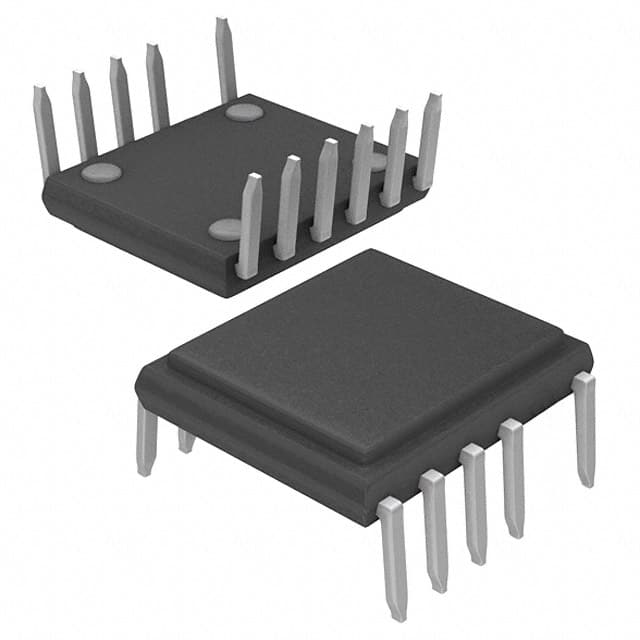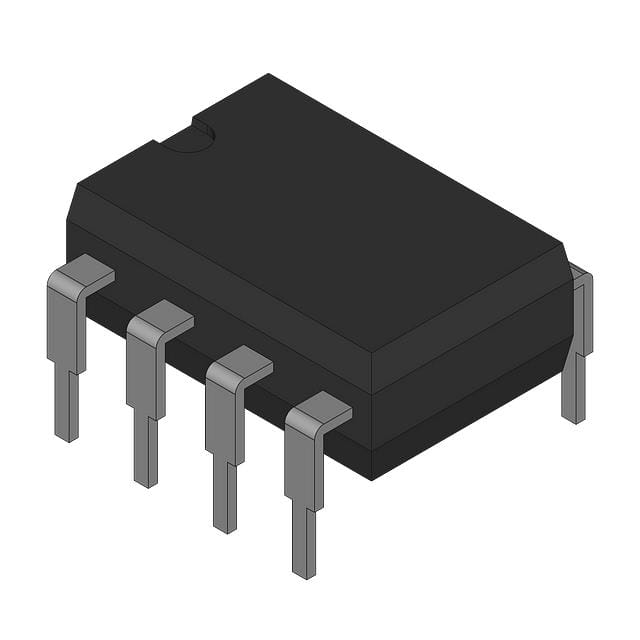Ⅰ. PMIC - AC DC Converters, Offline Switchers
Ⅱ. Physical Characteristics of PMIC - AC DC Converters, Offline Switchers
Ⅲ. Electrical Characteristics of PMIC - AC DC Converters, Offline Switchers
PMIC - AC DC Converters, Offline Switchers
Power Management Integrated Circuits (PMICs) with AC-DC converters and offline switchers are essential components in power supply systems that convert alternating current (AC) to direct current (DC). These integrated circuits provide efficient and regulated DC power for various electronic devices. Here's an introduction to PMICs with AC-DC converters and offline switchers:

AC-DC Converters:
AC-DC converters, also known as rectifiers, are designed to convert AC voltage from a mains power source into DC voltage suitable for powering electronic devices. PMICs with AC-DC converters offer the following functionalities:
1.Input Voltage Range: PMICs with AC-DC converters can handle a wide input voltage range, allowing them to operate with different AC mains standards found globally. Typical input voltage ranges include 85V to 265V AC, covering various residential and industrial power systems.
2.Conversion Efficiency: AC-DC converters aim to maximize the conversion efficiency by minimizing power losses during the conversion process. Higher conversion efficiency results in improved energy utilization and reduced heat generation.
3.Power Factor Correction (PFC): PMICs may incorporate power factor correction techniques to enhance the power factor of the system. Power factor correction minimizes reactive power, improves power quality, and ensures compliance with energy efficiency standards.
4.Output Voltage Regulation: AC-DC converters in PMICs provide regulated DC output voltage, maintaining a stable voltage level required by the electronic devices. Voltage regulation ensures proper operation and protection of downstream components.
Offline Switchers:
Offline switchers, also known as flyback converters or isolated DC-DC converters, are utilized in PMICs for applications requiring galvanic isolation or specific voltage regulation. PMICs with offline switchers offer the following features:
1.Galvanic Isolation: Offline switchers provide galvanic isolation between the input and output circuits. This isolation ensures safety and protection for sensitive components and users, particularly in applications with higher voltages.
2.Voltage Regulation: Offline switchers regulate the output voltage to a specific level, ensuring a stable and accurate DC voltage supply. The output voltage can be programmable or fixed, depending on the PMIC's design and application requirements.
3.Conversion Efficiency: Offline switchers are designed to achieve high conversion efficiency by reducing power losses during the switching process. Higher efficiency translates into reduced energy consumption and improved overall system performance.
4.Protection Features: PMICs with offline switchers incorporate protection features like overcurrent protection, overvoltage protection, and thermal shutdown. These mechanisms safeguard the system from faults, ensuring safe and reliable operation.

PMICs with AC-DC converters and offline switchers provide comprehensive solutions for power conversion and management in a variety of applications. The specific features and capabilities of these PMICs may vary depending on the intended use and design specifications. For detailed information on the specific PMIC and its AC-DC converters and offline switchers, it is recommended to consult the datasheet or product documentation provided by the manufacturer.
Physical Characteristics of PMIC - AC DC Converters, Offline Switchers
The physical characteristics of Power Management Integrated Circuits (PMICs) with AC-DC converters and offline switchers primarily pertain to their package type, size, pin configuration, and thermal considerations. These physical characteristics influence the form factor, integration, and thermal management of the PMIC. Here are some common physical characteristics of PMICs with AC-DC converters and offline switchers:
1.Package Type: PMICs with AC-DC converters and offline switchers are available in various package types, including surface mount packages (such as QFN, BGA, or WLCSP) and through-hole packages (such as DIP or TO-220). The choice of package type depends on factors such as board space, power dissipation requirements, and manufacturing processes.
2.Size: PMICs come in different sizes, ranging from small, compact packages suitable for portable devices to larger packages for high-power applications. The size of the PMIC affects the overall form factor and integration capabilities within the system.
3.Pin Configuration: PMICs have specific pin configurations that facilitate connectivity with the system. The number and arrangement of pins depend on the functionality and features of the PMIC. These pins typically include power supply inputs, ground connections, control inputs, and outputs for regulated voltage and current.
4.Thermal Considerations: PMICs with AC-DC converters and offline switchers generate heat during operation, particularly in high-power applications. Adequate thermal management is crucial to ensure optimal performance and reliability. PMICs may incorporate features such as exposed thermal pads, integrated heatsinks, or heat spreaders to dissipate heat efficiently and maintain acceptable operating temperatures.
5.Markings and Labels: PMICs generally have markings and labels on their surface to indicate important information such as manufacturer, part number, pin functions, and specifications. These markings help with identification and proper usage of the PMIC.
It is important to note that while these physical characteristics are relevant to PMICs, they are not directly tied to AC-DC converters and offline switchers. Instead, they relate to the overall packaging and physical design of the PMIC.
Electrical Characteristics of PMIC - AC DC Converters, Offline Switchers
The electrical characteristics of Power Management Integrated Circuits (PMICs) with AC-DC converters and offline switchers are crucial in determining their performance and functionality in converting and regulating AC to DC power. These electrical characteristics directly impact the efficiency, voltage regulation, and protection features of the PMIC. Here are some important electrical characteristics of PMICs with AC-DC converters and offline switchers:
1.Input Voltage Range: PMICs with AC-DC converters specify the acceptable range of input voltages they can handle. This range typically covers the AC mains voltage variations found in different regions, such as 85V to 265V AC.
2.Conversion Efficiency: AC-DC converters aim to achieve high conversion efficiency to minimize power losses during the conversion process. The conversion efficiency is specified as a percentage and indicates how effectively the PMIC converts AC power to DC power.
3.Output Voltage Regulation: PMICs with AC-DC converters and offline switchers provide regulated DC output voltage. The output voltage regulation ensures that the PMIC maintains a stable and accurate voltage level within a specified range, even under varying load conditions.
4.Output Power Capacity: PMICs with AC-DC converters and offline switchers have a specified maximum output power capacity. This specification indicates the maximum power the PMIC can deliver to the load while maintaining proper voltage regulation.
5.Current Limiting and Protection: PMICs incorporate current limiting and protection features to safeguard the system and components. These features include overcurrent protection (OCP), which limits the output current to prevent damage in case of excessive load currents, and short-circuit protection (SCP), which shuts down the output in the event of a short circuit.
6.Power Factor Correction (PFC): PMICs with AC-DC converters may integrate power factor correction techniques to improve the power factor of the system. PFC helps reduce harmonic distortion and improve overall power quality by aligning the current waveform with the input voltage waveform.
7.Switching Frequency: Offline switchers in PMICs operate at specific switching frequencies, which determine the speed at which the AC voltage is converted to DC. The switching frequency can affect factors such as efficiency, electromagnetic interference (EMI), and the size of the passive components used in the design.
8.Isolation Voltage: PMICs with offline switchers provide galvanic isolation between the input and output circuits. The isolation voltage specifies the maximum voltage that can be safely applied between the input and output without compromising safety or performance.
9.Thermal Considerations: PMICs with AC-DC converters and offline switchers generate heat during operation. The thermal characteristics, including thermal resistance and thermal shutdown features, determine the device's ability to dissipate heat and prevent overheating.



